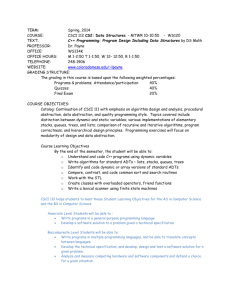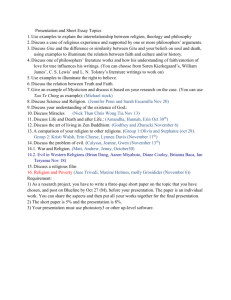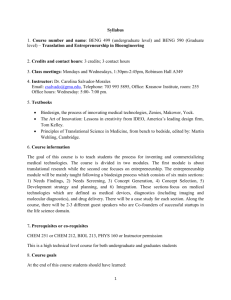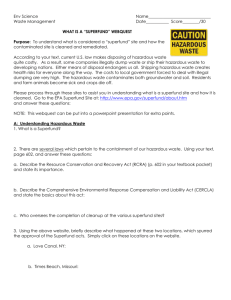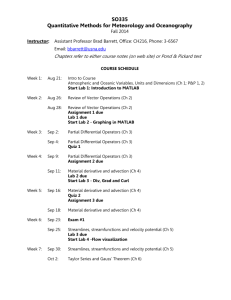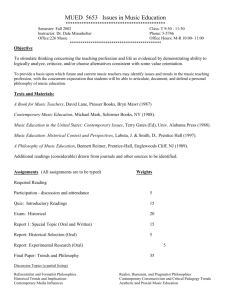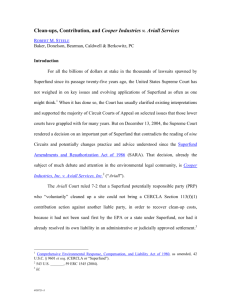Introduction to Superfund Sites and Health Effects of Hazardous Waste
advertisement
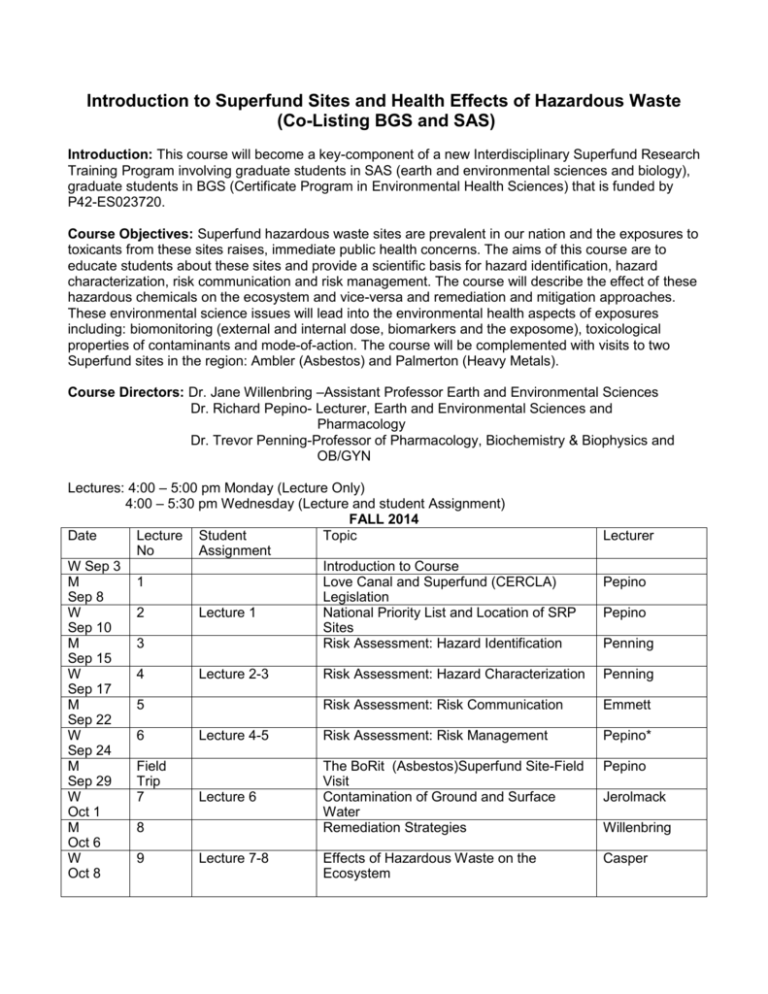
Introduction to Superfund Sites and Health Effects of Hazardous Waste (Co-Listing BGS and SAS) Introduction: This course will become a key-component of a new Interdisciplinary Superfund Research Training Program involving graduate students in SAS (earth and environmental sciences and biology), graduate students in BGS (Certificate Program in Environmental Health Sciences) that is funded by P42-ES023720. Course Objectives: Superfund hazardous waste sites are prevalent in our nation and the exposures to toxicants from these sites raises, immediate public health concerns. The aims of this course are to educate students about these sites and provide a scientific basis for hazard identification, hazard characterization, risk communication and risk management. The course will describe the effect of these hazardous chemicals on the ecosystem and vice-versa and remediation and mitigation approaches. These environmental science issues will lead into the environmental health aspects of exposures including: biomonitoring (external and internal dose, biomarkers and the exposome), toxicological properties of contaminants and mode-of-action. The course will be complemented with visits to two Superfund sites in the region: Ambler (Asbestos) and Palmerton (Heavy Metals). Course Directors: Dr. Jane Willenbring –Assistant Professor Earth and Environmental Sciences Dr. Richard Pepino- Lecturer, Earth and Environmental Sciences and Pharmacology Dr. Trevor Penning-Professor of Pharmacology, Biochemistry & Biophysics and OB/GYN Lectures: 4:00 – 5:00 pm Monday (Lecture Only) 4:00 – 5:30 pm Wednesday (Lecture and student Assignment) FALL 2014 Date Lecture Student Topic No Assignment W Sep 3 Introduction to Course M 1 Love Canal and Superfund (CERCLA) Sep 8 Legislation W 2 Lecture 1 National Priority List and Location of SRP Sep 10 Sites M 3 Risk Assessment: Hazard Identification Sep 15 W 4 Lecture 2-3 Risk Assessment: Hazard Characterization Sep 17 M 5 Risk Assessment: Risk Communication Sep 22 W 6 Lecture 4-5 Risk Assessment: Risk Management Sep 24 M Field The BoRit (Asbestos)Superfund Site-Field Sep 29 Trip Visit W 7 Lecture 6 Contamination of Ground and Surface Oct 1 Water M 8 Remediation Strategies Oct 6 W 9 Lecture 7-8 Effects of Hazardous Waste on the Oct 8 Ecosystem Lecturer Pepino Pepino Penning Penning Emmett Pepino* Pepino Jerolmack Willenbring Casper M Oct 13 W Oct 15 M Oct 20 W Oct 22 M Oct 27 10 W Oct 29 M Nov 3 W Nov 5 M Nov 10 W Nov 12 M Nov 17 15 W Nov 19 M Nov 24 20 M Dec 1 W Dec 3 W Dec 10 22 11 Lecture 9-10 12 13 Lecture 11-12 14 Lecture 13-14 16 17 Field Trip 18 Lecture 15-16 Lecture 17 19 Lecture 18-19 21 23 24 Lecture 20-21 Effects of the Ecosystem on Hazardous Waste Environmental Justice and Hazardous Waste Sites The National Toxicology Program Casper Dealing with Mixtures Penning Bio-monitoring-External Dose Bio-monitoring-Internal Dose Philadelphia Air Monitoring Services Blair Exposome Concepts Blair Health Effects of Major SF-ContaminantsHeavy Metals-I The Palmerton (Heavy Metal) Superfund Site-Field Visit Health Effects of Major SF-ContaminantsHeavy Metals-II Health Effects of Major SF-ContaminantsPersistent Organic Chemicals (PCBs and Halogenated-PAH) Health Effects of Major SF-ContaminantsPAH Health Effects of Major SF-ContaminantsAsbestos No Class Thanksgiving Computational Data Bases TOXNET Liu TOX 21st Century Hogenesch Student Presentation and Report on Selected Superfund Site Course Directors Beers** Penning Pepino Osterhoudt Penning Penning Vachani Penning Mr. Richard Pepino has over 25 years of experience in regulatory science and was a former member of EPA region III. Ms. Samantha Beers, Director US EPA Region III Office of Enforcement, Compliance and Environmental Justice. Course Grading: 30% Lecture Assignments 30% Written Hazard Report on Superfund Site 30% Oral Presentation on Selected Superfund Sites 10% Class participation Eligible Students: Any PhD student in SAS, BGS, MES or MPH student with permission of the course director. Pre-requisites would include 400 level course in Biology/Chemistry and Biochemistry.
